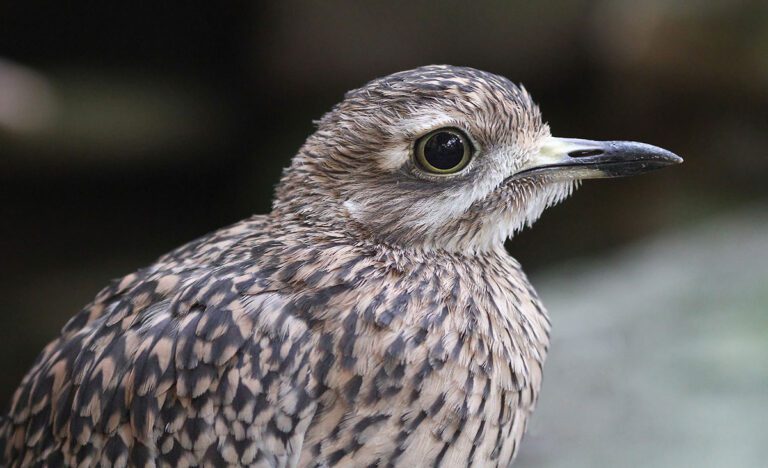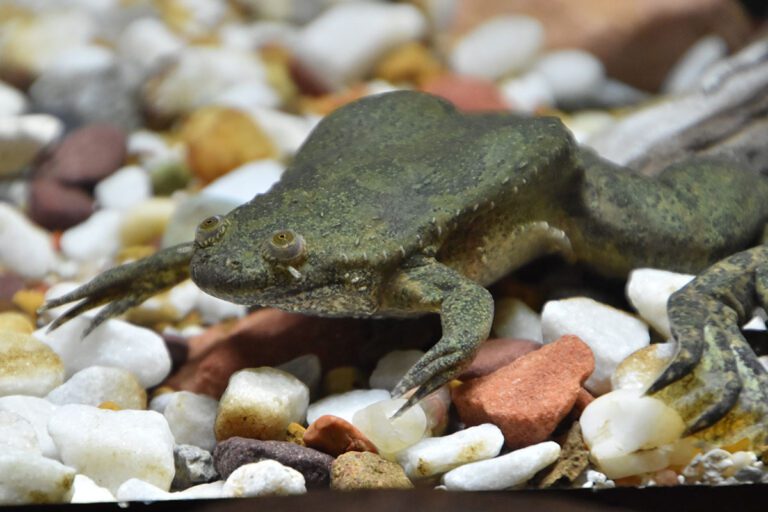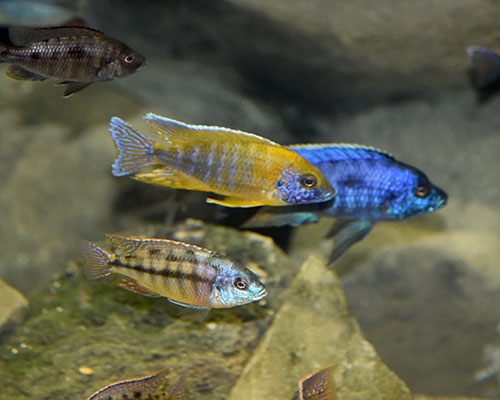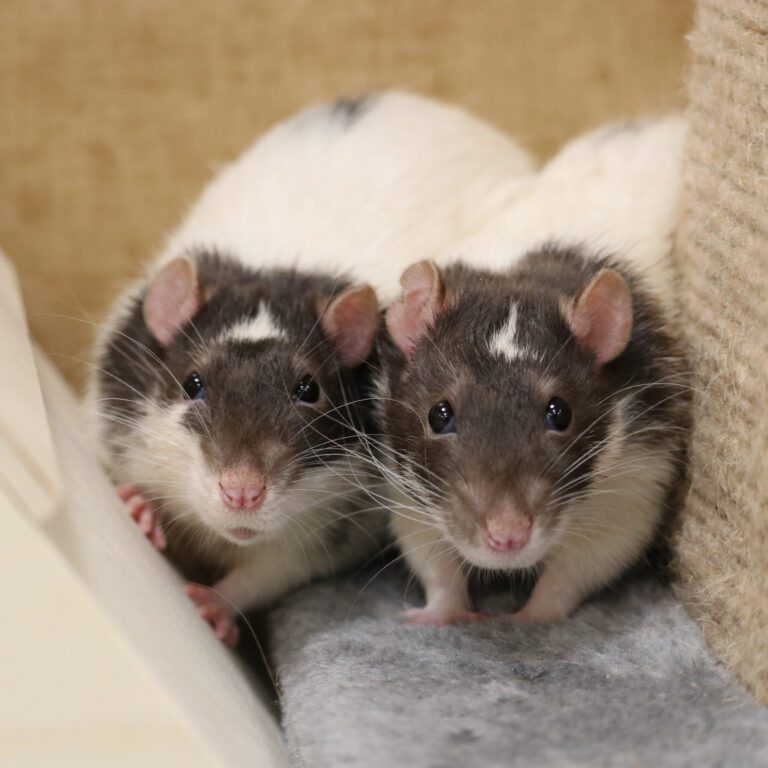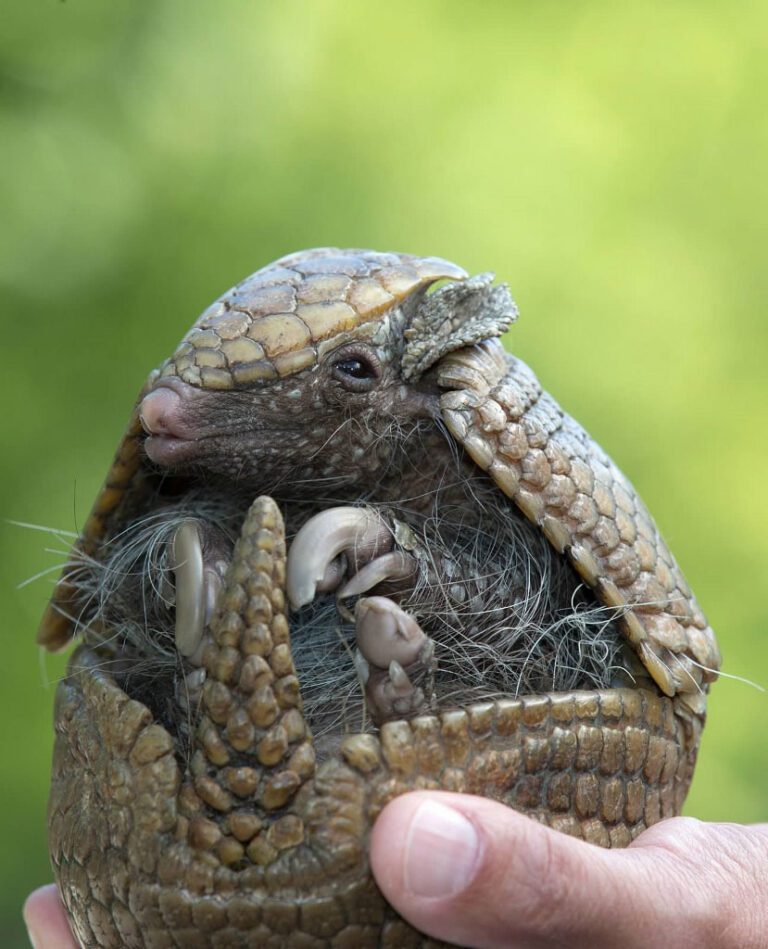Three-toed Box Turtle (Ambassador Animal)
(Terrapene carolina triunguis)
The Zoo is home to one Three-toed Box Turtle as part of our ambassador animal program (habitat not on public display).
Animal Facts
Three-toed Box Turtles are small, terrestrial turtles that reach 4-6 inches long. Males tend to be more brightly colored than females, with orange scales on their throats and front legs. Males also have red-orange eyes, while females have yellow-brown eyes.
They are called box turtles because of their ability to close their shell like a box. As a defense, they will hide in their shell and use the hinge on their plastron to close the gap between the carapace and the plastron, shutting the shell completely.
Box turtles are often mistaken as tortoises, due to the domed shape of their shell. However, they are more closely related to turtles, as they are omnivores and have slightly webbed toes.
Their home range is restricted to the size of a football field. As terrestrial turtles, they spend their time on land, although they will stay close to water and enjoy soaking in shallow waters.
During the winter from November to March, they will burrow 2 feet down in the soil and brumate, entering a state of inactivity. Often, they return to the same location multiple years in a row to burrow into the same hibernaculum.
Diet
Omnivorous. Insects, spiders, snails, worms, other small vertebrates, carrion, greens, veggies, and fruit.


Status in natural range
- Not Evaluated
International Union for Conservation of Nature (IUCN) Red List status



















